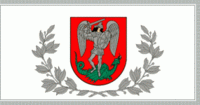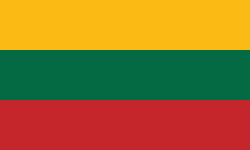Joniškis
 |
 |
With the Church of the Accession of the Holy Virgin Mary (founded in 1901) and a complex of two Jewish synagogues – The Red Synagogue (built in 1897) and The White Synagogue (built in 1823) – at its center, the town has the status of an urban architectural heritage site.
A railway line connecting Riga and Šiauliai runs along the western boundary of the town. West of the railway are the town's allotment gardens, the Lutheran Cemetery and the Cemetery for the Victims of World War II. Joniškis has two water reservoirs formed by dams on the River Sidabra. Joniškis has the Jonas Avyžius Public Library of Joniškis District Municipality, the Basketball Museum and a large animal compound feed manufacturing plant "Joniškio Grūdai".
Joniškis is the Lithuanian name of the town. Historical versions of the name in other languages include Polish: Janiszki, Russian: Янишки Yanishki, Yiddish: יאַנישאָק Yanishok, Latvian: Jānišķe, and German: Jonischken.
Map - Joniškis
Map
Country - Lithuanian_Soviet_Socialist_Republic_(1918–1919)
 |
 |
| Flag of Lithuania | |
Germany had lost World War I and signed the Compiègne Armistice on 11 November 1918. Its military forces then started retreating from the former Ober Ost territories. Two days later, the government of the Soviet Russia renounced the Treaty of Brest-Litovsk, which had assured Lithuania's independence. Soviet forces then launched a westward offensive against Estonia, Latvia, Lithuania, Poland and Ukraine in an effort to spread the global proletarian revolution and replace national independence movements with Soviet republics. Their forces followed retreating German troops and reached Lithuania by the end of December 1918.
Currency / Language
| ISO | Currency | Symbol | Significant figures |
|---|---|---|---|
| EUR | Euro | € | 2 |
| ISO | Language |
|---|---|
| LT | Lithuanian language |
| PL | Polish language |
| RU | Russian language |















